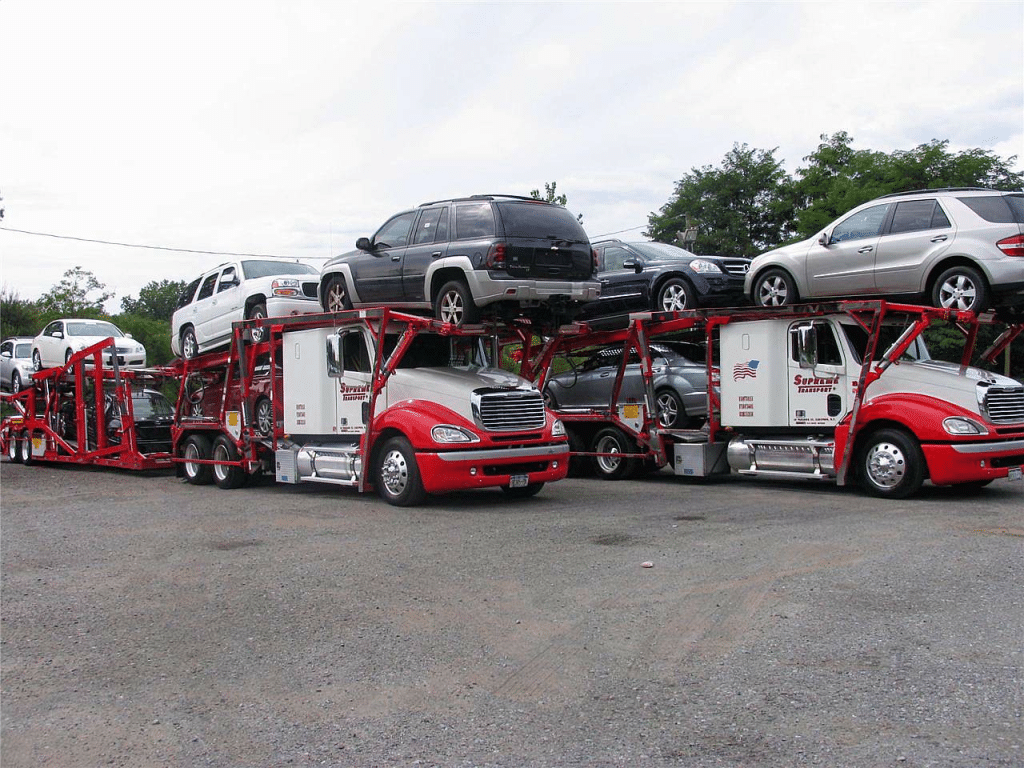Introduction To The Alfa Romeo Spider
The Alfa Romeo Spider, an icon of automotive design and engineering, holds a revered place in the pantheon of vintage vehicles. Introduced in 1966, this Italian masterpiece quickly captured the hearts of car enthusiasts with its sleek lines, spirited performance, and unmistakable charm. The brainchild of Pininfarina, the renowned design house responsible for some of the most beautiful cars ever made, the Spider seamlessly blends elegance with sportiness.
From its inception, the Alfa Romeo Spider was designed to offer an exhilarating driving experience. Underneath its stylish exterior lay a chassis and engine configuration that promised agility and responsiveness. The early models were equipped with a 1.6-liter twin-cam four-cylinder engine that produced 109 horsepower—impressive figures for its time. This powerplant ensured that drivers could enjoy both leisurely cruises along coastal roads and spirited drives through winding mountain passes.
The Alfa Romeo Spider underwent several iterations over its production run until 1994, each version refining its aesthetic and mechanical attributes while maintaining the core essence that made it so beloved. Notably featured in popular culture—perhaps most famously in the film “The Graduate”—the Spider’s allure transcended mere transportation; it became a symbol of freedom and style.
Today, owning an Alfa Romeo Spider is akin to possessing a piece of automotive history. It represents not just a car but an era defined by innovation and passion for driving pleasure. As such, vintage vehicle transport services play a crucial role in preserving these timeless machines for future generations to admire and cherish.
Historical Significance Of The Alfa Romeo Spider
The Alfa Romeo Spider holds a revered place in automotive history, epitomizing the quintessence of Italian design and engineering. Introduced in 1966 at the Geneva Motor Show, the Spider swiftly became an icon of style and performance. Its sleek, aerodynamic lines were penned by Pininfarina, one of Italy’s most prestigious design houses. The car’s aesthetic appeal wasn’t just skin deep; it was underpinned by an advanced monocoque chassis and a range of spirited twin-cam engines that offered both nimbleness and power.
Historically, the Spider is perhaps best known for its role in popular culture. It achieved global fame as Dustin Hoffman’s ride in the 1967 film “The Graduate,” where its red paintwork and distinctive silhouette captivated audiences worldwide. This cinematic appearance cemented its status as a symbol of youthful rebellion and sophisticated allure.
Beyond pop culture, the Alfa Romeo Spider also played a pivotal role in motorsport. Variants of the model competed successfully in events like the Targa Florio and various rally championships, showcasing Alfa Romeo’s commitment to performance and reliability.
Moreover, the Spider represented a significant era for Alfa Romeo as it transitioned from post-war recovery into becoming a marque synonymous with luxury sports cars. It bridged generations with its production spanning four decades until 1993, adapting subtly to changing tastes while retaining its core identity.
Today, vintage vehicle transport services often handle these cherished models with great care, recognizing their historical significance not just as automobiles but as cultural artifacts that encapsulate an era of automotive excellence and Italian flair.
Key Features And Specifications Of Vintage Alfa Romeo Spiders
The vintage Alfa Romeo Spiders are iconic for their distinctive blend of Italian design, engineering excellence, and spirited driving dynamics. Introduced in 1966 with the Duetto, these roadsters quickly became emblematic of Alfa Romeo’s commitment to performance and style. The early models were powered by a robust 1.6-liter twin-cam inline-four engine, which was later upgraded to larger displacements such as the 1.8-liter and 2.0-liter versions in subsequent iterations like the Spider Veloce.
One of the key features that set these cars apart was their unmistakable Pininfarina bodywork. The sleek, aerodynamic lines and elegant curves not only contributed to its aesthetic appeal but also enhanced its performance by reducing drag. The interior, though minimalist by today’s standards, exuded a certain charm with its wooden steering wheel, simple dashboard layout, and comfortable bucket seats wrapped in premium materials.
Underneath the stylish exterior lay advanced mechanical components for the era. The independent front suspension combined with a live rear axle provided a balanced ride quality that was both engaging and comfortable for long drives. Disc brakes on all four wheels ensured effective stopping power, which was crucial for spirited driving sessions on winding roads.
In terms of handling dynamics, the Spider’s lightweight construction made it incredibly nimble. The precise steering offered excellent feedback to drivers, making it a favorite among driving enthusiasts who appreciated its responsiveness and agility.
Overall, vintage Alfa Romeo Spiders are celebrated not just for their beauty but also for their engineering prowess that delivers an exhilarating driving experience—a testament to Alfa Romeo’s enduring legacy in automotive history.
Preparing Your Alfa Romeo Spider For Transport
Preparing your Alfa Romeo Spider for transport involves several crucial steps to ensure its safety and maintain its pristine condition. Whether you are moving it across the country or just a few states away, meticulous preparation is essential to safeguard this vintage gem.
Begin by thoroughly cleaning your Spider, both inside and out. A spotless exterior will make it easier to spot any pre-existing damage, while a clean interior will prevent debris from shifting and causing scratches during transit. Document the car’s current condition with high-resolution photographs from multiple angles, capturing details of any existing dents, scratches, or other imperfections. These images will serve as vital evidence should any disputes arise regarding damage during transport.
Next, address all mechanical aspects of your vehicle. Check fluid levels including oil, coolant, and brake fluids; top them up if necessary but avoid overfilling. Ensure that tires are properly inflated to their recommended pressure levels; this helps prevent unnecessary stress on the suspension system. Additionally, deactivate any alarms to avoid unnecessary battery drainage and potential interruptions during transit.
Remove all personal items from the vehicle’s interior. Loose objects can cause damage if they shift around while in transit and may not be covered by insurance policies provided by transport companies.
Finally, consider protecting your Alfa Romeo Spider with a custom car cover designed for transport use. This added layer can shield against dust and minor abrasions en route.
By taking these steps to prepare your Alfa Romeo Spider for transport, you help ensure that it arrives at its destination in the same immaculate condition as when it left.
Choosing The Right Transport Method For Vintage Vehicles
When it comes to transporting a vintage Alfa Romeo Spider, selecting the appropriate transport method is crucial to ensure the safety and preservation of this classic automobile. Unlike modern vehicles, vintage cars require special handling due to their age, value, and often delicate condition. Therefore, it’s essential to weigh your options carefully.
Enclosed transport is widely considered the gold standard for shipping vintage vehicles. This method involves placing the car inside a fully enclosed trailer, protecting it from external elements such as weather conditions, road debris, and potential vandalism. For a cherished Alfa Romeo Spider with its iconic design and historical significance, this level of protection can be indispensable. Enclosed transport may come at a higher cost compared to open transport but offers peace of mind that your vehicle will arrive in pristine condition.
Another important factor is choosing a reputable and experienced transport company specializing in classic cars. The intricacies involved in handling vintage automobiles demand expertise that not all companies possess. Look for carriers who have specific experience with models like the Alfa Romeo Spider; they should be familiar with securing mechanisms that won’t damage the car’s frame or paintwork.
Additionally, consider insurance coverage during transit. Verify that the transporter provides adequate insurance that covers vintage cars’ unique value. Sometimes additional coverage might be necessary to ensure full protection against any unforeseen incidents.
Ultimately, selecting the right transport method involves balancing cost with security and expertise. With careful planning and by opting for services tailored specifically for classic cars, you can ensure that your Alfa Romeo Spider reaches its destination safely and retains its timeless charm.
Ensuring Safe Loading And Unloading Procedures
Ensuring the safe loading and unloading of a vintage Alfa Romeo Spider is paramount to preserving its pristine condition. This process begins with selecting an appropriate transport method—typically an enclosed trailer, which offers superior protection against the elements compared to open transport. Prior to loading, it’s essential to conduct a thorough inspection of the vehicle, documenting its current state with detailed photographs.
This step provides a reference point should any damage occur during transit.
Positioning ramps at an optimal angle is crucial for preventing undercarriage damage as the car is driven or winched onto the trailer. Given the Alfa Romeo Spider’s low ground clearance and delicate structure, using extended ramps can minimize steep angles and reduce stress on suspension components. Additionally, ensuring that all tires are properly inflated can aid in smooth loading and unloading operations.
Once aboard, securing the vehicle correctly is vital. Utilizing soft straps or wheel nets that avoid contact with sensitive parts like body panels or suspension components helps prevent scratches and structural strain. The use of wheel chocks can further stabilize the vehicle within the trailer.
During unloading, patience and precision are equally important. Reversing these steps carefully ensures that no sudden movements jeopardize the integrity of this classic automobile. It’s advisable to have spotters guide both loading and unloading processes to provide extra safety oversight.
In summary, meticulous attention to detail throughout each stage ensures that your cherished Alfa Romeo Spider remains in impeccable condition from departure to arrival at its destination.
Insurance And Legal Considerations For Vintage Vehicle Transport
Transporting a vintage vehicle such as an Alfa Romeo Spider involves several critical insurance and legal considerations to ensure the car’s safety and compliance with regulations. Firstly, securing adequate insurance coverage is paramount. Standard auto insurance policies typically do not cover the unique risks associated with transporting classic cars. Therefore, it is essential to obtain specialized transport insurance that covers potential damages during transit, including loading and unloading incidents, accidents en route, and even theft.
Additionally, thoroughly vetting the transport company’s credentials is crucial. A reputable transporter should have comprehensive liability coverage and cargo insurance. Requesting proof of these policies can provide peace of mind that any mishaps will be financially covered. Moreover, understanding the specifics of the transporter’s insurance policy—such as coverage limits and exclusions—is vital to avoid unexpected expenses.
On the legal front, ensuring compliance with state and federal transportation regulations is necessary to prevent legal complications during transit. This includes verifying that the transport company complies with Department of Transportation (DOT) regulations if transporting across state lines. Furthermore, obtaining all requisite permits for oversized or particularly valuable vehicles may be required depending on local jurisdictions.
Documenting every aspect of the vehicle’s condition before transport through detailed photographs and written records can serve as invaluable evidence should disputes arise regarding damage claims. Lastly, reviewing all contracts meticulously before signing ensures clarity on terms related to liability, delivery timelines, and dispute resolution mechanisms.
In summary, taking proactive steps in securing specialized insurance coverage and ensuring regulatory compliance can safeguard your Alfa Romeo Spider during its journey to its new destination or event while mitigating potential legal issues.
Maintenance Tips After Transporting Your Alfa Romeo Spider
Ensuring the well-being of your Alfa Romeo Spider after it has been transported is crucial to preserving its vintage charm and performance. The journey, regardless of how carefully managed, can subject the vehicle to various stresses. Begin with a thorough inspection as soon as the car arrives at its destination. Examine the exterior for any signs of damage such as scratches or dents that may have occurred during transport.
Pay particular attention to vulnerable areas like the bumpers and side panels.
Next, focus on the engine and mechanical components. Transport vibrations can sometimes cause connections to loosen or fluids to shift. Check all fluid levels, including oil, coolant, brake fluid, and transmission fluid. Top off any that are low and look for signs of leaks around seals and hoses. It’s also wise to inspect the battery terminals for corrosion and ensure they are tightly connected.
The tires are another critical aspect requiring attention. Verify that they are properly inflated according to manufacturer specifications since pressure fluctuations during transport can lead to underinflation or overinflation issues which affect handling.
Take your Alfa Romeo Spider for a short test drive in a controlled environment before embarking on longer journeys. Listen for unusual sounds from the engine or suspension system which could indicate underlying problems not immediately visible upon initial inspection.
Lastly, give your vehicle a good wash and wax not only for aesthetic reasons but also to remove any debris accumulated during transit that could harm paintwork over time. Regular maintenance checks post-transport will help keep your vintage Alfa Romeo Spider in peak condition, ensuring you can enjoy its classic elegance on every drive.









